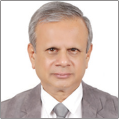Translate this page into:
Editor’s Page

It gives us great gratification to launch this second issue of the journal. The first issue was quite well received, and we hope the subsequent ones will be equally well accepted. The number of submissions to the journal website also has seen a significant climb. It is our ardent hope that the members of our society, Indian Society for Pediatric and Adolescent Endocrinology (ISPAE) and sister societies will continue patronizing us with submission of more original research papers.
In this issue, we are focusing on two subjects which are of major concern to all pediatric endocrinologists and diabetologists. Childhood and adolescence are critical periods for the development of the skeleton and accrual of peak bone mass. Any affront to the developing bones as may occur in chronic systemic illnesses and malnutrition, is likely to affect the bone strength, and may result in wide ranging skeletal problems with an increased risk for bone fractures. Kumar RA and colleagues from Puducherry, South India, in an observational cross-sectional study, have presented their findings on bone mineral density and vitamin D status in children and adolescents with type 1 diabetes. The effect of vitamin D and calcium supplementation in improving bone health and the impact of glycemic control of type 1 diabetes on bone mineral health could not be assessed. Prospective longitudinal studies are recommended for the future. Such studies are very rarely reported from India.
In an invited editorial on this topic, Nandhini Perumal and Raja Padidela from Manchester, UK, stress the need to recognize the complications that may occur in the musculoskeletal system in such settings and proactively implement measures to improve musculoskeletal health. They have suggested the way forward and outlined the diagnostic criteria of osteoporosis in childhood (including history of long bone fractures and assessment of vertebral fractures) in conjunction with dual-energy X-ray absorptiometry. Experts in this field from India, Anuradha Khadilkar and Shruti Mondkar from Pune, India, give an Indian overview of this problem since India currently has the highest number of children and adolescents with diabetes. They also highlight the burden of poor glycemic control due to economic constraints and the high prevalence of vitamin D deficiency and the need for both short- and long-term studies. They strongly recommend assessing the effect of growth and puberty on bone health in these children.
We also present to you another important aspect of maternal hypothyroidism and the role of newborn screening for congenital hypothyroidism (CH), which has not been widely discussed in India. This is a national program which is still awaiting implementation on a large scale in various states in India. Our society, ISPAE, has published clear guidelines in 2018 on newborn thyroid screening and management of those with confirmed CH. In this issue, Kumar Sanjeev and colleagues from New Delhi, North India, have reported the prevalence of transient neonatal hypothyroidism as evidenced by elevated TSH levels in babies born to hypothyroid mothers and their developmental follow-up till 6 months of age. Larger studies are needed to assess its implications on linear growth, academic performance, as well as language and intellectual development of these children.
Our expert Sarah Mathai from Vellore, South India, with long years of experience in the field of CH and newborn screening, in her editorial, highlights the importance of extending newborn screening for CH from large cities and hospitals to resource-poor regions and the relevance of maternal thyroid status on the growth and intellectual development of the children with elevated TSH. Our invited expert, Susan R. Rose from Cincinnati, USA, provides a global viewpoint on “mild TSH elevation” and its long-term impact on neurocognitive outcome of affected newborns. She has provided us with a very lucid systematic approach on how to follow-up newborns with non-resolving mild elevated TSH levels, classifying them as transient or persistent and whether these newborns should be on levothyroxine replacement therapy. She has also thrown light on the potential effect of maternal hypothyroidism in intellectual development and thyroid function in the infant.
We have our usual pages on interesting case reports as well clinical images. A young trainee articulates vividly her experiences and joy in managing a pediatric endocrinology clinic in a tertiary hospital in the background of COVID-19 epidemic. I am sure these experiences will provide exciting perspectives on the ever-changing state of clinical practice in the face of adversities.
I hope the selected summaries of the recent publications in other journals are thought-provoking examples of advances in the current research as well the state of art and will provide an impetus for the young fellows and students alike.
Happy reading!





